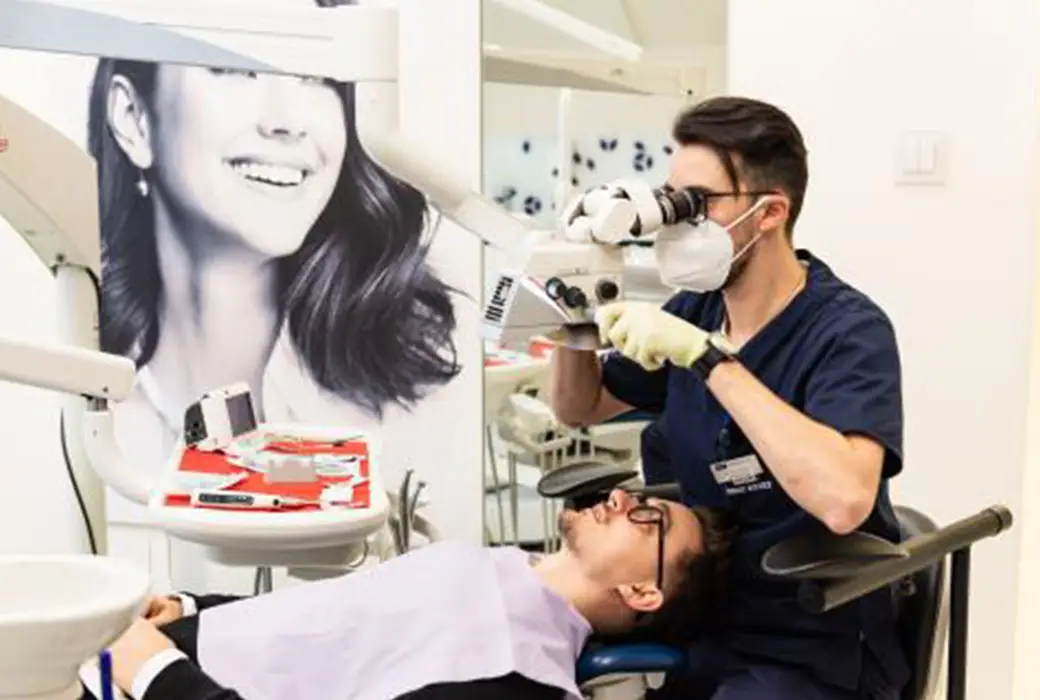
Restorative Dentistry
What is it? Types of endodontic treatments
Restorative dentistry is the branch of dentistry that deals with the diagnosis and treatment of dental caries, as well as restoring teeth damaged by trauma.
Tooth decay is the world's most widespread chronic disease and is considered a major global public health problem.
According to the FDI World Dental Federation, almost half of the world's population, 44%, suffer the consequences of not treating tooth decay. Globally, between 60% and 90% of schoolchildren are affected by dental caries.
Tooth decay - a danger to general health
Tooth decay is caused by a combination of factors. Lack of proper oral hygiene allows bacteria in the oral cavity to turn food debris into acids that attack tooth enamel.
If plaque and tartar are not removed with proper daily brushing and professional hygiene in the dentist's office, tooth decay and periodontal disease are favored.
Tooth decay does not heal by itself. Left untreated and untreated in time, tooth decay progresses rapidly, affecting the natural tooth structure and can lead to tooth loss.
What is restorative dentistry?
Because early-stage tooth decay can only be seen by a doctor, regular visits to the dental clinic are the only way to prevent deep decay.
Restorative dentistry means restoring the structure and functionality of teeth affected by caries, but also by fractures, injuries or dental trauma.
Endodontic treatments carried out by doctors specialized in restorative dentistry involve removing the affected hard tissues of the tooth, cleaning the decayed surface, crafting fillings and restoring the tooth.
Restorative dentistry - types of treatments
Endodontic treatment is customized depending on the cause of the patient's presentation to the restorative dentist.
Endodontic treatments save the tooth affected by dental caries.
Left untreated, cavities can progress rapidly and can damage the dental pulp and nerve, at which point pain occurs.
Symptoms can vary depending on the surface area affected. We may experience tooth sensitivity, mild pain when eating sweet, cold or hot foods, spontaneous sharp pains or continuous sharp pain.
To treat tooth decay, the restorative dentist may opt for several types of treatment.
Physiognomic filling (fillings)
A fissure filling is the most common method of restoring a decayed tooth. The dentist will clean the area where the decay has set in by removing the affected tissues and fill the space with a biocompatible composite, which will restore the tooth's functionality.
In the case of oral restorations on the front teeth, in order to preserve the aesthetics of the smile, the composite will be a color close to that of the natural tooth.
Physiognomic filling under the microscope
This type of endodontic treatment is performed with a dental microscope and allows the restorative dentist to see the caries-affected surface with very high precision in order to correctly assess the extent and depth of the caries.
The Zeiss dental microscope and the Leica dental microscope, used in the DENT ESTET clinics, offer the possibility to magnify the affected areas at least 16 times, thus increasing the success rate of root canal treatments.
Root canal filling under the microscope
When tooth structure is destroyed by decay, inflammation of the dental pulp and nerve results. Root canal treatment involves first removing the nerve and sealing the tooth, with the specialist opting to restore the tooth using a prosthetic work such as a dental crown with a post or a dental inlay.
Dental treatments save the tooth affected by dental trauma.
There are three types of dental trauma:
- Fractures: enamel cracks, uncomplicated coronal fracture, complicated coronal fracture, radicular fracture, alveolar fracture;
- Dislocations: contusion, subluxation, extrusion, lateral dislocation, intrusion, avulsion;
- Injuries to the gums and oral mucosa: laceration (tearing of tissue), contusion, abrasion.
In the case of cracks or fractures of enamel, if the tooth fragment is small, the treatment consists in finishing the edges or filling them with composite material.
If the cracked or broken fragment is larger, with exposed dentin, the dental therapist will recommend a drug treatment to repair the wound and a coronal restorative stage.
The situation becomes more complicated in the case of root fractures or alveolar fractures, where endodontic treatment is needed first. According to specialists, teeth with root fractures can rarely be saved. An apical resection - surgery to remove the affected portion at the root tip - can save part of the tooth.
If the tooth nerve is damaged, a first stage of endodontic treatment is also needed. This can be followed by the application of a crown-radicular device (abutment) and prosthetic work (dental crown).
The treatments applied in restorative dentistry are supported by the latest, minimally invasive technologies at DENT ESTET, which aim to keep and maintain as much of the natural tooth structure as possible.
In addition, new technologies help patients have a comfortable experience during the dental treatment.


